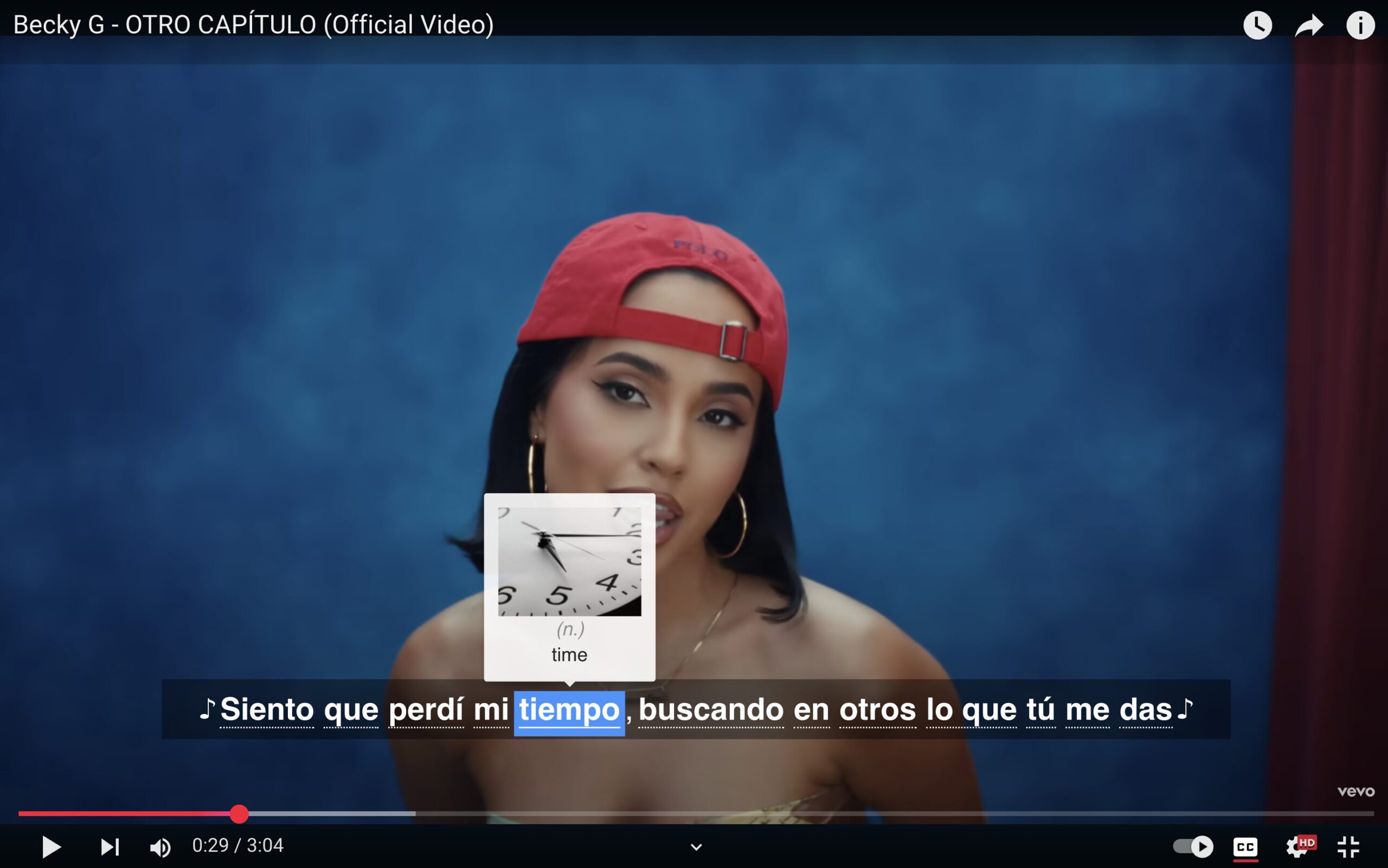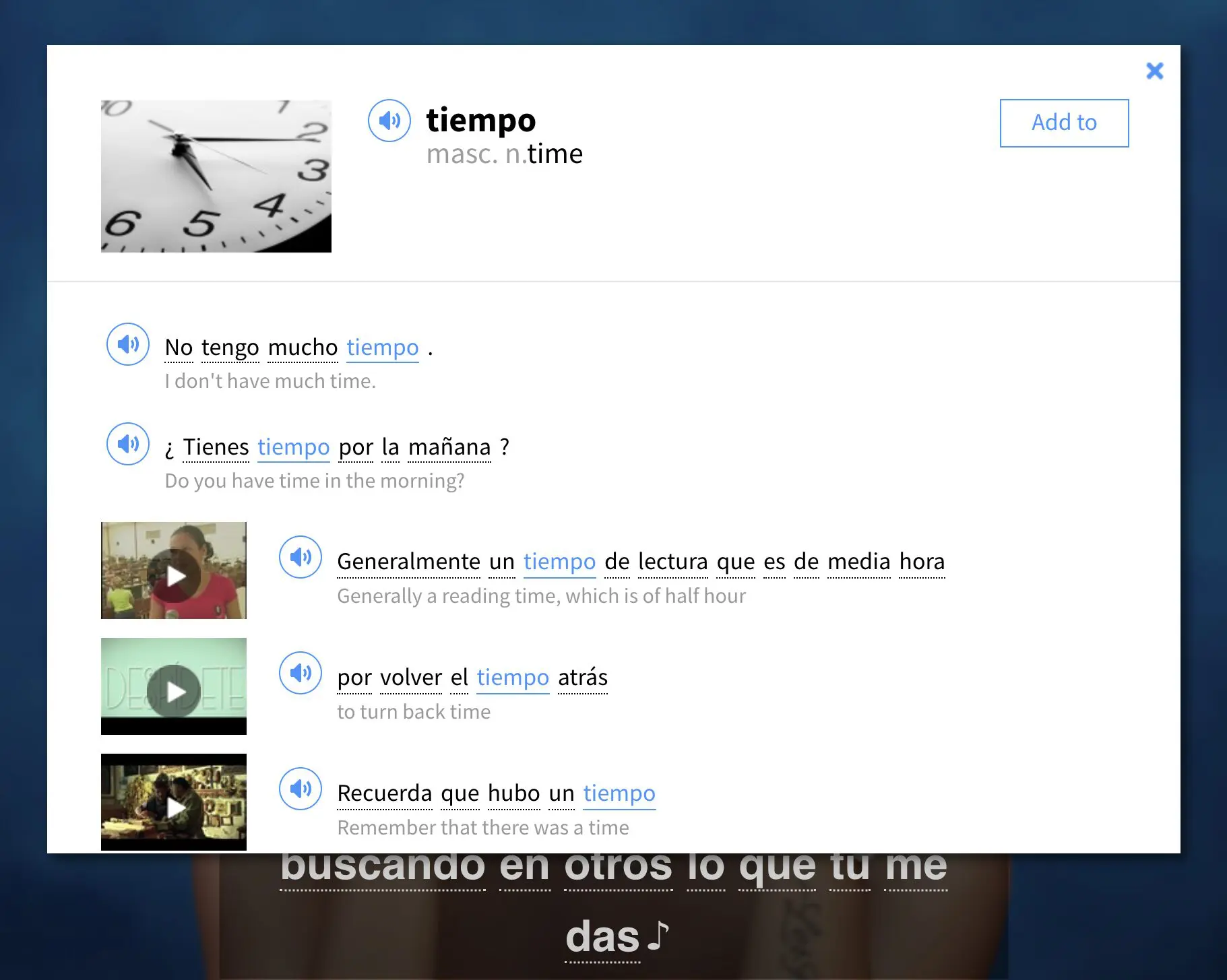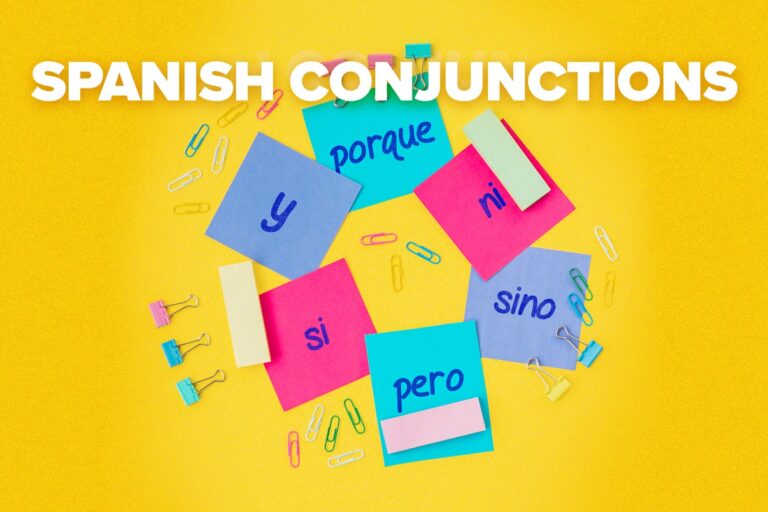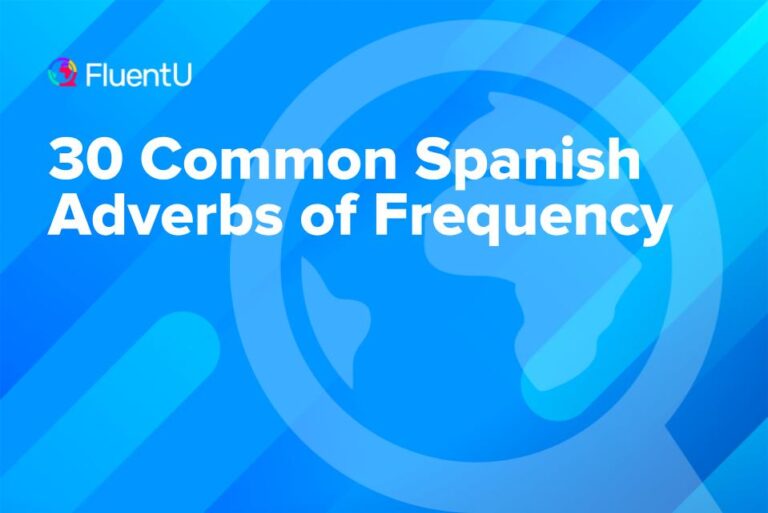8 Steps to Learn Spanish in 30 Days
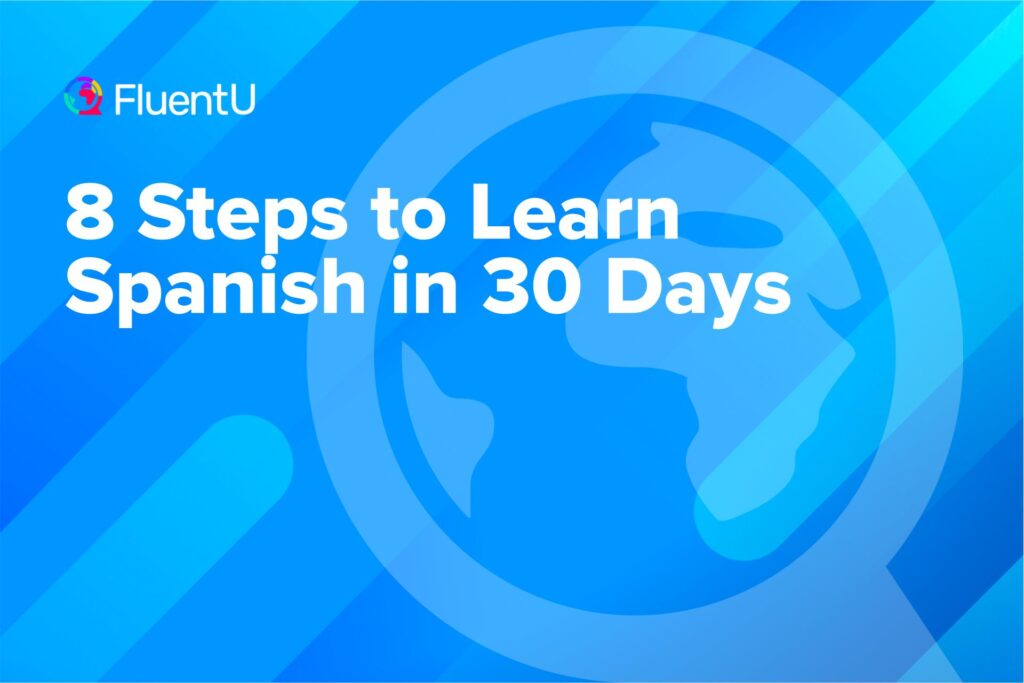
To learn Spanish in a month is an ambitious a task. You’ll need to write in Spanish, read in Spanish, listen, sing and even dream in Spanish. It’s going to be intense, but certainly worth it.
Here are eight steps to help you get the most out of learning Spanish in a month.
Download: This blog post is available as a convenient and portable PDF that you can take anywhere. Click here to get a copy. (Download)
1. Turn Your Life into a Spanish Crash Course
Of course, there are different checkpoints on the road to achieving Spanish fluency. You have to be somewhat realistic about which of these you can reasonably reach in one month.
If you’re starting from zero, you cannot expect to become a Spanish-speaking diplomat in 30 days, but you can surely learn a lot if you set your mind to it and have a good game plan. You could easily learn how to hold decent conversations and write out any messages, emails or letters you might like to send.
Regardless of where you’re starting from, the first step is setting a goal for how much you expect to learn. Then you’ll begin putting together a foundation for how you’re going to get there.
If you’re going to start immediately and you’ve only got one month to get the job done, it may be hard for you to manage taking a class. Signing up for one and starting a new schedule can take a little time, and classes may all run for more than a single month.
In this case, grabbing a solid beginner’s textbook (or maybe a slightly more advanced one if you already have Spanish knowledge) and reading a chapter a day can take you a long way,
There are dozens of textbooks available for decent prices on Amazon. One that’s a highly-rated and quick-paced book for beginners is “Easy Spanish: Step-by-Step” by McGraw Hill.
Using this book for your 30-day challenge will assist you in breaking things down into manageable lessons. With 15 chapters, doing 1 chapter every 2 days would mean you’ll finish the book and have covered many topics in the course of your month.
Spending a grand total of 2-3 hours on your overall reading skills and vocabulary knowledge every day can get you very far in the course of your month! Pair this chapter-by-chapter textbook work with flashcards and vocabulary lists, and you’ll be all set.
2. Immerse Your World in Spanish
If you can’t go abroad, you still have hope. There are many opportunities to bring the language into your life, no matter where you live.
Aside from English, Spanish is the most common language spoken in the United States, and in a number of states a substantial portion of residents are fluent or native in Spanish.
Finding a community of Spanish-speakers can be much easier than you may think. On the MeetUp website you may find a group of Spanish-speakers looking to meet up at a local cantina, a language exchange swap or even a group of equally curious English-speakers wanting to form a Spanish study group, depending on what’s in your area.
Not actually practicing the language—you know, live, in person, naturally—is one of the ways that many fail in their goals for the month. In your 30 days, actually using the language actively for at least 30 minutes a day can be extremely beneficial to your learning and show you how much progress you’ve made on a daily basis.
If you’re searching for it, it can’t be that hard to find. You can try making the Hispanic restaurant down the street your new nightly hang out. Pay a visit to a Hispanic museum, see a film in Spanish or seek out whatever else you can tie to your studying that your hometown may have to offer.
And instead of enjoying your regular English jams, books and TV programs for the month, try replacing them with some Spanish entertainment instead. Heck, you can even go to your Facebook settings and change your language to Spanish—and try even more methods for learning with Facebook.
There are also many Spanish content creators on Instagram and TikTok, not to mention all the Spanish teachers who post educational content. You have tons to choose from! You can literally Google “Spanish teachers Instagram” and a whole list will be shown.
Another method I highly recommend is watching your favorite English movies and TV shows dubbed in Spanish. You can easily find dubs of “The Simpsons,” “Friends,” “The Big Bang Theory,” “SpongeBob,” “How I Met Your Mother” and more.
You can always combine these 30 minutes of active practice with the previous chapter-by-chapter textbook and vocabulary plan. Just jot down all the new vocabulary you encounter while interacting with this Spanish-language media.
3. Use FluentU
Another great way of immersing yourself in authentic content and getting some solid study done at the same time is to use FluentU.
Spanish Immersion from Your Device
I get it–learning Spanish isn’t always a walk in the park. But it doesn’t have to be a boring, tedious, or hair-pulling experience either. In fact, making it fun is key to your success!
With FluentU, you can learn Spanish naturally by turning any YouTube or Netflix video with subtitles into an interactive language lesson. I’m talking about language immersion from the convenience of your device.
You can even import your favorite YouTube videos into your FluentU account to learn from them using the app or website. Or browse our curated library of videos handpicked for beginners and intermediate learners.
While you watch a video, FluentU’s interactive subtitles let you tap on any word for an instant definition, example sentences, images, and audio. No more pausing and searching for translations—everything you need is right there!
It's all built to help you learn how to use words in real contexts. And as you learn, you can add new words to your flaschards with just a click! For example, if I tap on the word "tiempo," this is what pops up:
Learn even faster with built-in quizzes that reinforce vocab from every video. FluentU tracks your progress, gives you extra practice with tricky words, and reminds you when it’s time to review—so your learning is always personalized and effective.
Try FluentU today on your computer or tablet, or download our app from the App Store or Google Play. Click here to take advantage of our current sale! (Expires at the end of this month.)
4. Get a Personal Tutor
Those who have succeeded in similar ventures give much credit to having a personal tutor.
It’s easy to see that the benefits of having a personal tutor are huge. By having a tutor, you can be selective about what you learn because their objective is to teach you and you only. They’ll target the methods, resources and overall lesson plans to your specific needs.
Learning the things most relevant to your life and having the content on your exact skill level will make the process far quicker and smoother. The tutor will work at your speed and meet your learning preferences. Plus, they’ll be able to correct you which is crucial in the language learning process.
So, ask around and view your local postings to see who is available in your area.
And if you’re having difficulty finding a good tutor near you, don’t sweat it; there are plenty to go around online. On italki, you can find a native Spanish-speaking tutor (perhaps even one from the country of your choice!) to tutor you through Zoom or Skype.
Having a good tutor for at least 30 minutes every weekday can really push you right up towards your goal here. That’s at least 8-9 hours of personalized Spanish studying you’ll have at the end of your month! Sounds like it might be expensive, yeah—but if you’re just trying to get as far as you possibly can in one mere month, you might want to invest to go that extra mile.
You can also use italki (linked above) to find a language exchange partner instead. These guys are free, but they come at the precious cost of your time. For every half-hour they teach you Spanish, you’ll need to teach them your native language for the same amount of time. They’re also harder to get to commit to practicing every day.
5. Study, Study, Study
If you want to learn as much as you can in a month, you’ll have to sacrifice most of your free time to studying. Always keep a book, dictionary and translation app handy, because you never know when some free time will open up that you can devote to studying.
When you’re sitting on the bus, waiting in line or working out, there’s always some way to fill that time with Spanish! Fill your phone up with Spanish reading material, like e-books and audio in the form of podcasts and audiobooks.
Find some Spanish-language videos as well, whether on a platform like YouTube (with its vast selection) or a video-based language learning program like FluentU (which has interactive subtitles and personalized review quizzes).
Whenever you’ve got an idle moment, or one during which you could be multitasking by popping some Spanish audio on in the background, you can be studying! You’ll be surprised at how much you can learn with that in-between time throughout your day.
The longer you spend studying like this, the stronger in Spanish you’ll be at the end of the month. A minimum of 30 minutes of this, perhaps even scattered around in minute-long increments, is the recommended daily dose.
6. Label Everything You Touch
So this one may get a little obnoxious, to you and to everyone who lives and works around you, but nobody ever said this month was going to be easy. It’s time to bring a little more color into your living space. And, hey, people might actually find this endearing and educational.
Go to the store, grab the biggest set of sticky notes you can find and label everything you own with its Spanish translation. The foods in your cabinet, the desk you’re sitting at (el escritorio), the lamp (la lámpara), the computer you’re reading from (la computadora), your bed (la cama), your bar of soap (la barra de jabón)—okay, maybe that’s a bit far unless you can label the box it came in, but you get the point.
To save precious time, buy yourself a Spanish Vocabulary Stickers set, which comes with pre-made, color-coded labels for over a hundred of the most common items you’ll find in your home and office.
Not only is this a quick and almost effortless way of studying, it will catch you up on your vocabulary goals, give you the words you need to know the most and even make you realize whether it’s time for a garage sale or not.
7. Don’t Use Any English
It has been said that you don’t fully understand a language until you can think in it. This may be difficult depending on where you live, but entirely replacing English with Spanish in your everyday life—and consequently in your brain—can greatly escalate the process.
If you need to call a company to ask for information, press the button that they indicate to proceed in Spanish. If you go shopping for food, read the Spanish-language labels only and shop as much as you can at a Hispanic grocery store or in the Hispanic aisle at the supermarket.
Not saying to ignore Grandma’s weekly phone call, but it’s definitely a good idea to use as much Spanish and as little English as you can in your allotted time frame.
8. Go Abroad
If you can afford to make it happen, spending these 30 days of learning in a Spanish-speaking country can be extremely helpful.
Being in a Spanish-speaking country means that every time you go out, you’ll find Spanish. You’ll have no choice but to use Spanish as well. Seeing it every day on street signs, advertisements, restaurants and more can really help cement it into your brain.
Luckily, Spanish is the language spoken in the highest number of countries around the world, so you have quite a few to pick from. Spain, Central America, many places in the Caribbean and most of South America use the language, so wherever you’re at in the world, managing a fair-priced trip shouldn’t be extremely difficult.
Just imagine, lounging on the beach, drinking margaritas and chatting with locals—educationally of course.
So there we have it: 8 steps, 30 days and up to 3,000 words.
By spending around 4 hours a day studying and practicing, you can make a huge advancement in your Spanish knowledge.
But remember—that’s not 4 hours of staring at a textbook! You could be listening to reggaeton, dancing salsa, chatting with friends, going out on a MeetUp adventure, shopping for food, listening to a podcast on technology or reading a great novel.
After a few days, this will turn into your recreation time and your lifestyle, not just your Spanish study routine.
Happy studying and buena suerte!

